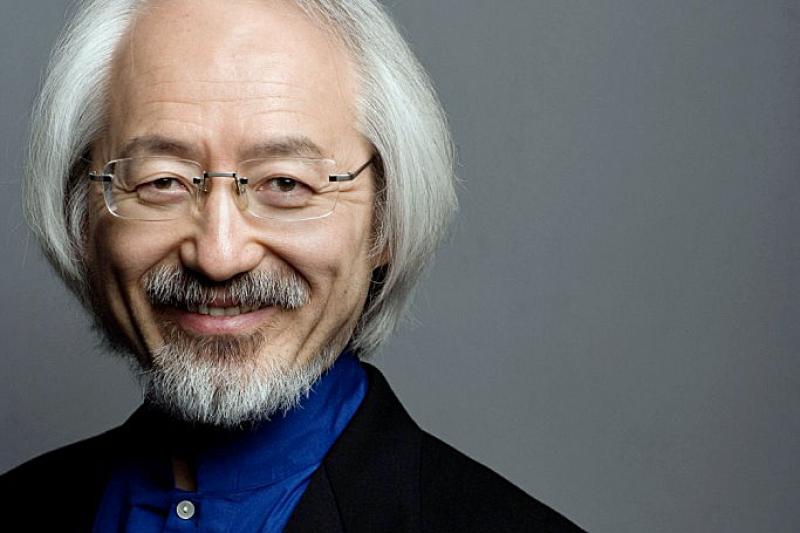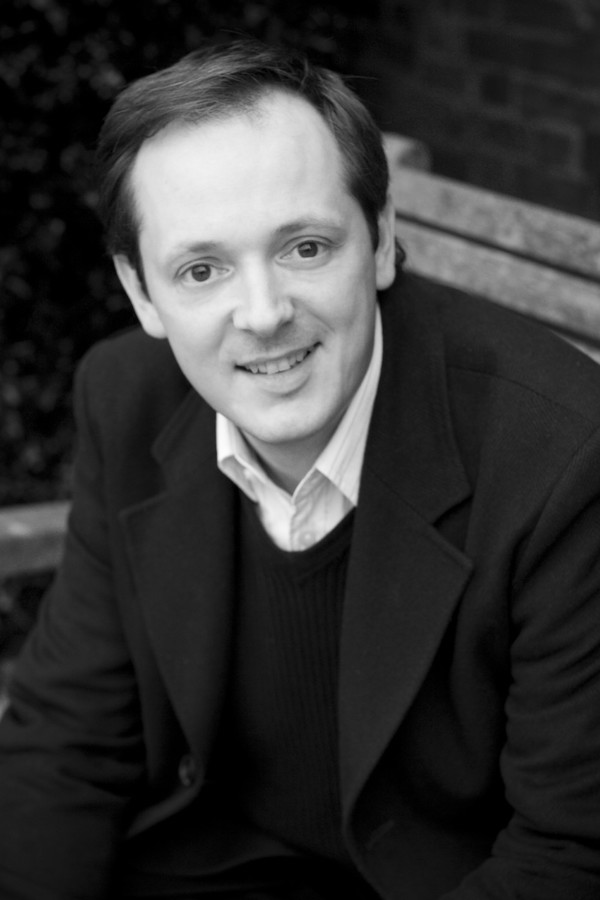Bach B Minor Mass, Bach Collegium Japan, Suzuki, Barbican | reviews, news & interviews
Bach B Minor Mass, Bach Collegium Japan, Suzuki, Barbican
Bach B Minor Mass, Bach Collegium Japan, Suzuki, Barbican
Clarity, colour and detail from Japanese Bach specialists

Masaaki Suzuki’s reputation precedes him. His recordings of Bach’s choral works with Bach Collegium Japan, the group he founded in 1990, have been arguably the finest of recent decades. But visits to the West, and especially to London, are rare, so this evening’s concert offered a valuable opportunity to find out what the dynamics are within the ensemble, and how they achieve such impressive results on disc.
Unlike many Bach interpreters, Suzuki is a real conductor. He doesn’t play violin or harpsichord when he leads, he actually conducts. He takes an interest in every detail of the music, focussing attention to what he considers the important part at any given moment. Western players could find that stifling, but the predominantly Japanese ensemble responds well to his Confucian approach. There is plenty of freedom and life in the instrumental playing, but always combined with absolute unity of intent.
Singers and audience alike responded to the conductor's clear gestures
Suzuki isn’t awed by the B Minor Mass, and he doesn’t present it as a towering, monolithic edifice. Instead, his approach is more inquisitive, exploring each movement to find its musical potential. Tempos are varied, occasionally fast but more often surprisingly slow. He’s not shy of rubato either, nor steeply terraced dynamics, both of which are often used to impressive structural effect, as in the "Cum Sancto Spiritu", which subtly but perceptibly changes gears from the one phrase to the next. Very legato phrasing rounds off the edges of the period instrument sound in some movements. The opening "Kyrie" was particularly smooth, and slow – an unusual approach, but a clear statement right from the start that Suzuki planned to do things differently.
The liberties of Suzuki’s interpretation are balanced by an orchestral sound that is at the severe end of the period performance spectrum. The string tone is woody, the oboes are narrow toned and the flutes have a husky chiff to their articulation. But there is also impressive variety to the orchestral timbres and playing techniques. That legato string articulation often gives way to a more detached and delicate phrasing for the arias. And the oboe soloist, Masamitsu San’nomiya, brought an impressive range of colours and shades to the obbligato line in "Qui sedes".
A choir of 20 singers, arranged around the back of the orchestra, is relatively large for period performance Bach, but, as with every other aspect of this performance, the numbers contribute tone and nuance rather than power. Their pronunciation was excellent, allowing Suzuki to use the consonants at the ends of lines as cadential devices in their own right. Choral counterpoint was generally clear, but the ear always felt directed, with the conductor bringing out the pertinent lines, singers and audience alike responding to his clear gestures.
 No weak links among the solo singers, with the most memorable performance from countertenor Robin Blaze (pictured right by Will Unwin). Curiously, he was the only soloist not to participate in the choral singing, but each of his solos was a real highlight, especially the radiant "Agnus Dei". Joanne Lunn gave lyrical and expressive soprano solos that might have sounded out of place in other performances, but which suited the mood that Suzuki had fostered. Soprano Rachel Nicholls, meanwhile, gave more chaste accounts of her solos and ensembles, and proved the ideal complement for Blaze in the "Et in unum Dominum".
No weak links among the solo singers, with the most memorable performance from countertenor Robin Blaze (pictured right by Will Unwin). Curiously, he was the only soloist not to participate in the choral singing, but each of his solos was a real highlight, especially the radiant "Agnus Dei". Joanne Lunn gave lyrical and expressive soprano solos that might have sounded out of place in other performances, but which suited the mood that Suzuki had fostered. Soprano Rachel Nicholls, meanwhile, gave more chaste accounts of her solos and ensembles, and proved the ideal complement for Blaze in the "Et in unum Dominum".
But the evening belonged to Suzuki, and the moments of sheer beauty and rare detail that he elicited were almost too numerous to recount. The "Gloria", rendered here as a fleeting dance. The sudden drop in temperature at the start of the "Et incarnatus est". The point near the end of the "Crucifixus" where he held back the full choir and orchestra to let us hear the fragile passacaglia bass line descending in the harpsichord.
If I’ve one complaint, though, it’s the venue. Suzuki’s introspective Bach too often disappears into the gloomy acoustic of the Barbican Hall. This concert is the first in a weekend residency, and events on Saturday take place in Milton Court and St. Giles’ Cripplegate. Audiences there have a better chance to catch all the nuances that make Suzuki’s Bach great. Better still, the group perform at the acoustically superior Saffron Hall in Saffron Walden on Sunday. That could be the ideal environment to experience these delicate and subtly nuanced readings.
- This concert was broadcast live on BBC Radio 3 and is available to listen on demand for 30 days
rating
Explore topics
Share this article
The future of Arts Journalism
You can stop theartsdesk.com closing!
We urgently need financing to survive. Our fundraising drive has thus far raised £49,000 but we need to reach £100,000 or we will be forced to close. Please contribute here: https://gofund.me/c3f6033d
And if you can forward this information to anyone who might assist, we’d be grateful.

Subscribe to theartsdesk.com
Thank you for continuing to read our work on theartsdesk.com. For unlimited access to every article in its entirety, including our archive of more than 15,000 pieces, we're asking for £5 per month or £40 per year. We feel it's a very good deal, and hope you do too.
To take a subscription now simply click here.
And if you're looking for that extra gift for a friend or family member, why not treat them to a theartsdesk.com gift subscription?
more Classical music
 Frang, Romaniw, Liverman, LSO, Pappano, Edinburgh International Festival 2025 review - sunlight, salt spray, Sea Symphony
Full force of the midday sea in the Usher Hall, thanks to the best captain at the helm
Frang, Romaniw, Liverman, LSO, Pappano, Edinburgh International Festival 2025 review - sunlight, salt spray, Sea Symphony
Full force of the midday sea in the Usher Hall, thanks to the best captain at the helm
 Elschenbroich, Grynyuk / Fibonacci Quartet, Edinburgh International Festival 2025 review - mahogany Brahms and explosive Janáček
String partnerships demonstrate brilliant listening as well as first rate playing
Elschenbroich, Grynyuk / Fibonacci Quartet, Edinburgh International Festival 2025 review - mahogany Brahms and explosive Janáček
String partnerships demonstrate brilliant listening as well as first rate playing
 BBC Proms: Akhmetshina, LPO, Gardner review - liquid luxuries
First-class service on an ocean-going programme
BBC Proms: Akhmetshina, LPO, Gardner review - liquid luxuries
First-class service on an ocean-going programme
 Budapest Festival Orchestra, Iván Fischer, Edinburgh International Festival 2025 review - mania and menuets
The Hungarians bring dance music to Edinburgh, but Fischer’s pastiche falls flat
Budapest Festival Orchestra, Iván Fischer, Edinburgh International Festival 2025 review - mania and menuets
The Hungarians bring dance music to Edinburgh, but Fischer’s pastiche falls flat
 Classical CDs: Hamlet, harps and haiku
Epic romantic symphonies, unaccompanied choral music and a bold string quartet's response to rising sea levels
Classical CDs: Hamlet, harps and haiku
Epic romantic symphonies, unaccompanied choral music and a bold string quartet's response to rising sea levels
 Kolesnikov, Tsoy / Liu, NCPA Orchestra, Chung, Edinburgh International Festival 2025 review - transfigured playing and heavenly desire
Three star pianists work wonders, and an orchestra dazzles, at least on the surface
Kolesnikov, Tsoy / Liu, NCPA Orchestra, Chung, Edinburgh International Festival 2025 review - transfigured playing and heavenly desire
Three star pianists work wonders, and an orchestra dazzles, at least on the surface
 BBC Proms: Láng, Cser, Budapest Festival Orchestra, Iván Fischer review - idiomatic inflections
Bartók’s heart of darkness follows Beethoven’s dancing light
BBC Proms: Láng, Cser, Budapest Festival Orchestra, Iván Fischer review - idiomatic inflections
Bartók’s heart of darkness follows Beethoven’s dancing light
 Weilerstein, NYO2, Payare / Dueñas, Malofeev, Edinburgh International Festival 2025 review - youthful energy and emotional intensity
Big-boned Prokofiev and Shostakovich, cacophonous López, plus intense violin/piano duo
Weilerstein, NYO2, Payare / Dueñas, Malofeev, Edinburgh International Festival 2025 review - youthful energy and emotional intensity
Big-boned Prokofiev and Shostakovich, cacophonous López, plus intense violin/piano duo
 theartsdesk at the Three Choirs Festival - Passion in the Cathedral
Cantatas new and old, slate quarries to Calvary
theartsdesk at the Three Choirs Festival - Passion in the Cathedral
Cantatas new and old, slate quarries to Calvary
 BBC Proms: Estonian Philharmonic Chamber Choir, Kaljuste review - Arvo Pärt 90th birthday tribute
Stillness and contemplation characterise this well sung late-nighter
BBC Proms: Estonian Philharmonic Chamber Choir, Kaljuste review - Arvo Pärt 90th birthday tribute
Stillness and contemplation characterise this well sung late-nighter
 BBC Proms: Kholodenko, BBCNOW, Otaka review - exhilarating Lutosławski, underwhelming Rachmaninov
Polish composers to the fore in veteran conductor’s farewell
BBC Proms: Kholodenko, BBCNOW, Otaka review - exhilarating Lutosławski, underwhelming Rachmaninov
Polish composers to the fore in veteran conductor’s farewell

Add comment